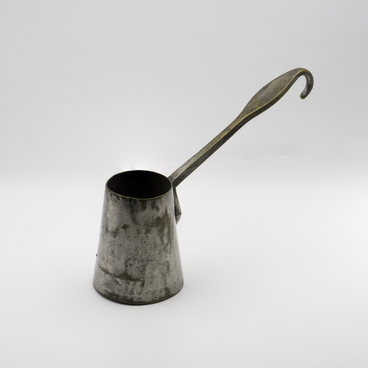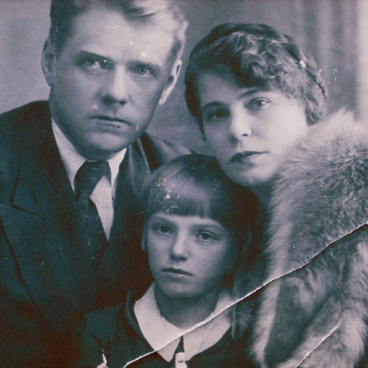The photo depicts a worker of a mica factory, Maria Bazanova. In the picture, she is engaged in cutting mica with mechanical scissors. In the middle of the last century, Bazanova worked in Zaozerny town, in the ‘Soyuzsluda’ trust, and was among the leaders of production. In the second third of the 20th century, the factory where she worked was of great strategic and economic importance not only for the region but also for the entire USSR. Zaozerny was founded in August 1776 by peasants from the parish of the Usolye Trinity of the Yenisei Order, Roman Amosov, Semyon Dresvyansky, and Ivan Pulkin. In the 19th century, production began to develop there. Researcher Gennady Volobuev reports that the Yakovlevsky ironworks plant was launched there.
Already in the late 1920s, the Soviet Union set a course for industrialization. For the electrical industry to develop at an accelerated pace, it was necessary to expand the production of mica. Without it, not a single light bulb would have lit up in the last century, because mica was present in all spark plugs. The result of this was the active development of the Barginsky mica deposits discovered at the very beginning of the century in the Zaozerny area. In 1932, the first workshop that processed raw materials extracted from there was opened in Zaozerny, and the building of the local church served as the premises.
The management of the Mica Factory had a task — to quickly increase the production of mica. However, the plant faced difficulties related to the lack of production and household premises. In addition, it was lacking the necessary equipment and qualified personnel. In the end, though, the management succeeded in resolving the issues. The entire volume of raw materials was supplied to the enterprise from Mica-Barg (Mica mine), where, in addition to mica, quartz and spar were also extracted. Raw materials were delivered by horse-drawn transport. The technological infrastructure of the production remained at a low level.
During the war years, the factory employees continued to work. A large number of employees were top performers and at times exceeded the production standards. At the end of the war, more than 400 employees were awarded the medal ‘For Valorous Labor in the Great Patriotic War of 1941-1945’.
In the post-war years, the factory was actively developing: capacity was increased, new types of products were mastered. The management paid great attention to improving working and living conditions, as well as the cultural life of employees. Only in the 1980s, Zaozerny mica factory faced hard times: production volume fell, income decreased, many specialists left.
After the collapse of the USSR, the factory became part of a new production association and became known as the Zaozernovsky Plant of Radio Components. Along with radio products, the plant continued to produce mica. However, the million-dollar debt and inefficiency in modern market realities led the plant to bankruptcy, and the enterprise was soon closed.
Already in the late 1920s, the Soviet Union set a course for industrialization. For the electrical industry to develop at an accelerated pace, it was necessary to expand the production of mica. Without it, not a single light bulb would have lit up in the last century, because mica was present in all spark plugs. The result of this was the active development of the Barginsky mica deposits discovered at the very beginning of the century in the Zaozerny area. In 1932, the first workshop that processed raw materials extracted from there was opened in Zaozerny, and the building of the local church served as the premises.
The management of the Mica Factory had a task — to quickly increase the production of mica. However, the plant faced difficulties related to the lack of production and household premises. In addition, it was lacking the necessary equipment and qualified personnel. In the end, though, the management succeeded in resolving the issues. The entire volume of raw materials was supplied to the enterprise from Mica-Barg (Mica mine), where, in addition to mica, quartz and spar were also extracted. Raw materials were delivered by horse-drawn transport. The technological infrastructure of the production remained at a low level.
During the war years, the factory employees continued to work. A large number of employees were top performers and at times exceeded the production standards. At the end of the war, more than 400 employees were awarded the medal ‘For Valorous Labor in the Great Patriotic War of 1941-1945’.
In the post-war years, the factory was actively developing: capacity was increased, new types of products were mastered. The management paid great attention to improving working and living conditions, as well as the cultural life of employees. Only in the 1980s, Zaozerny mica factory faced hard times: production volume fell, income decreased, many specialists left.
After the collapse of the USSR, the factory became part of a new production association and became known as the Zaozernovsky Plant of Radio Components. Along with radio products, the plant continued to produce mica. However, the million-dollar debt and inefficiency in modern market realities led the plant to bankruptcy, and the enterprise was soon closed.



